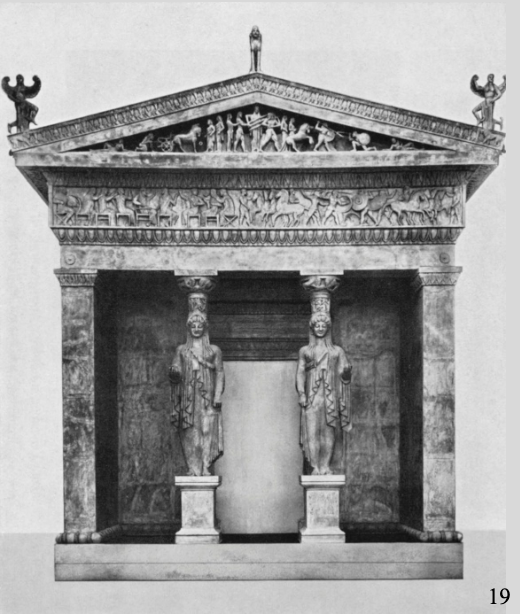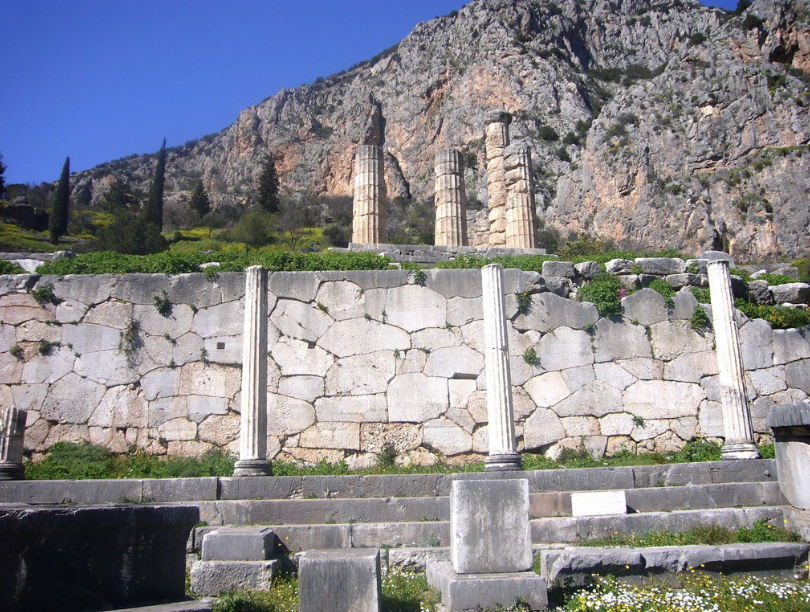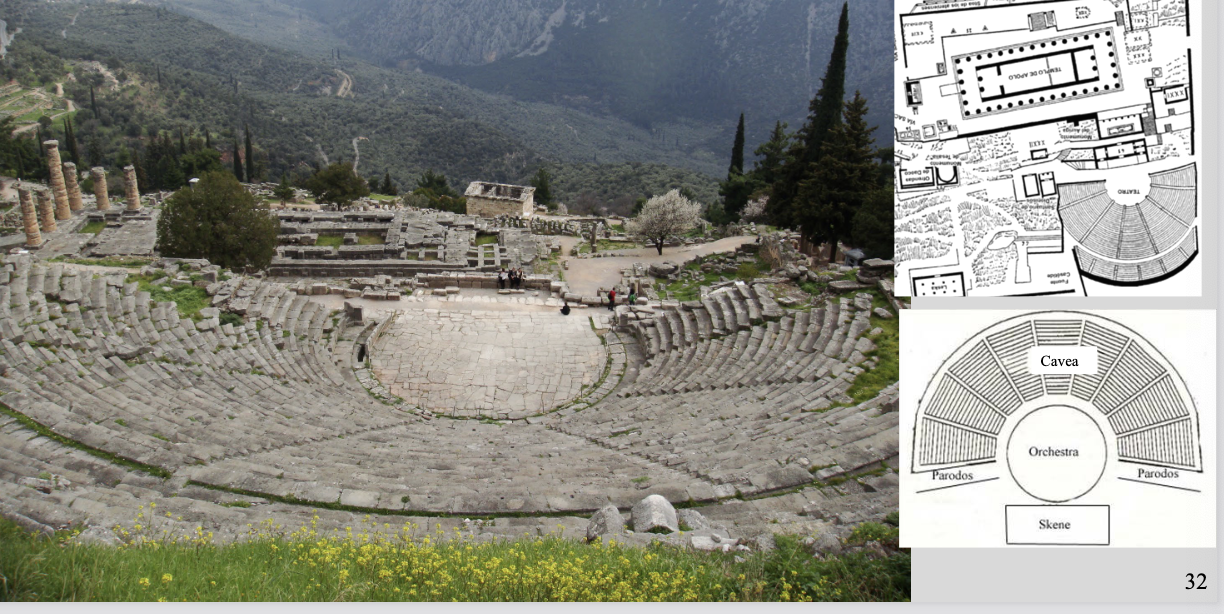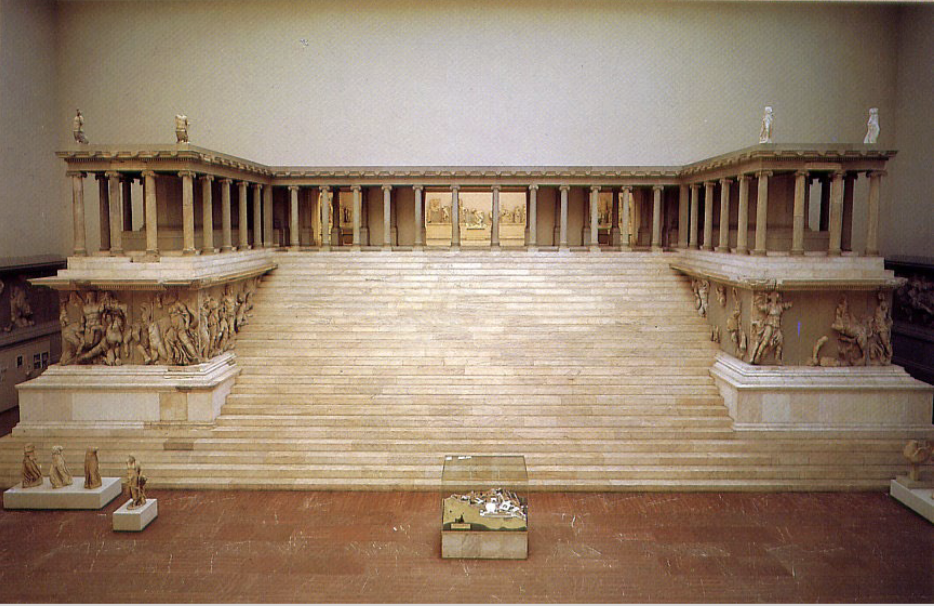Greek World (Archaic - Hellenistic Periods)
1/18
Earn XP
Description and Tags
600 BC - 31 BC
Name | Mastery | Learn | Test | Matching | Spaced |
|---|
No study sessions yet.
19 Terms
kouros (pl. kouroi)
nude depictions of the Greek idea of a male body
kore (korai)
early (around 530 bc) Greek statues of women always dressed in elaborate clothing
panhellenic sanctuary
site of festivals and games on a regional scale
primary examples are Olympia and Delphi (Sanctuary of Apollo 8th-4th cent. BC)
competitions were regularly organized to honor the gods
place for display and competition between poleis
center of regional ideology and identity
location for articulation of elite identiy

Delphi: Panhellenic Sanctuary: Sanctuary of Apollo: The Siphnian Treasury
530-525 BC
Built by citizens from island of Siphnos as a thanks offering for discovery of gold
example of caryatids and gigantomachy frieze
extensive use of ionic sculptural elements
made entirely of marble
caryatid
columns carved in the shape of women that support the front of a roof
gigantomachy
God versus Giants
Persian Wars (499-479 bc)
Greek cities of Ionia (west coast of Turkey) come under Persian control
499 = Ionian revolt, Persians regain control
492 = Persians attack and gain control of the Aegean islands
490 = Battle of Marathon saves Athens
480 = Athens destroyed by Persians
479 = Battle of Plataea, Greeks come together in temporary alliance to defeat Persians
stoa
a colonnaded porch with a roof and a solid rear wall (or rooms in the rear)

Delphi: Sanctuary of Apollo: The Stoa of the Athenians (c. 478)

Delphi: Sanctuary of Apollo: The Theatre (4th century BC)
major athenian events of 5th century BC - early and high classical
480 - Athens destroyed by Persians
479 - Greeks defeat Persians (battle of Plataea)
477 - Athens sets up Delian League
454 - Treasury of Delian League transferred to Athens
431 - Beginning of Peloponnesian War
404 - Athenian Empire dismantled by Sparta
cavea
seating area for the audience typically constructed on a natural slop of a hillside to form a bowl-shaped space
orchestra
central, circular performance space located at the base of the theatre
skene
structure of Greek theatre located at the back of the stage originally conceived as a tent used for storing costumes and masks and providing space for actors to change and retreat during performances
inlay
contrasting material set into a surface in pieces to form a design
Severe style
sculpture style in the Early Classical period (490-450 BC); marks the breakdown of the canonical forms of archaic art and the transition to the greatly expanded vocabulary of expression
Lysippos
a great Late Classical sculptor who won such renown that Alexander the Great selected him to create his official portrait
Attalids
Kingdom / Greek state during the Hellenistic period that ruled much of the Western part of Asia Minor from its capital city of Pergamon

Altar of Zeus from Pergamon
199-150 BC
Gigantomachy theme (defeat of the Gauls)
Interior occupied by myth of Telephos (founder of Pergamon)